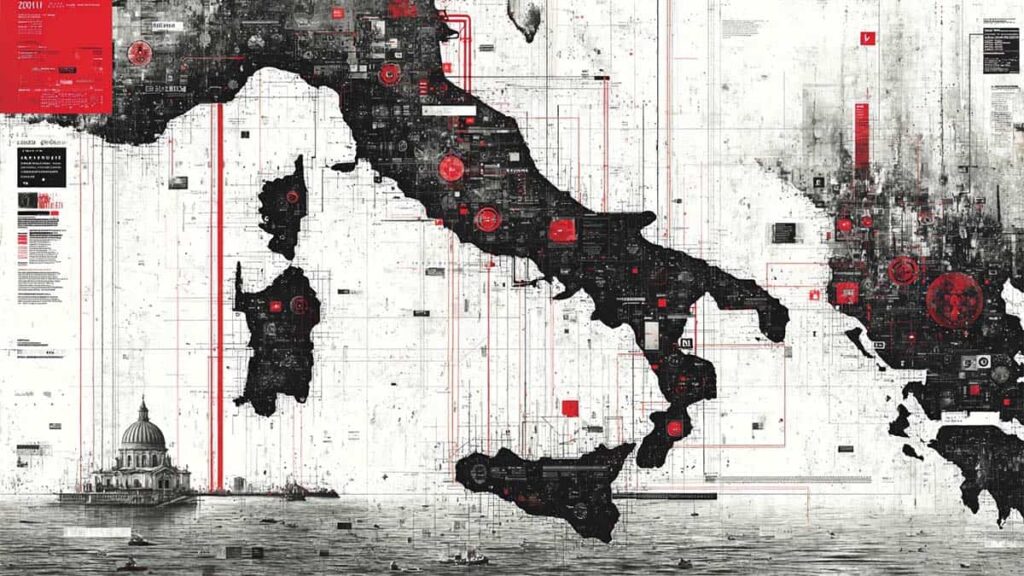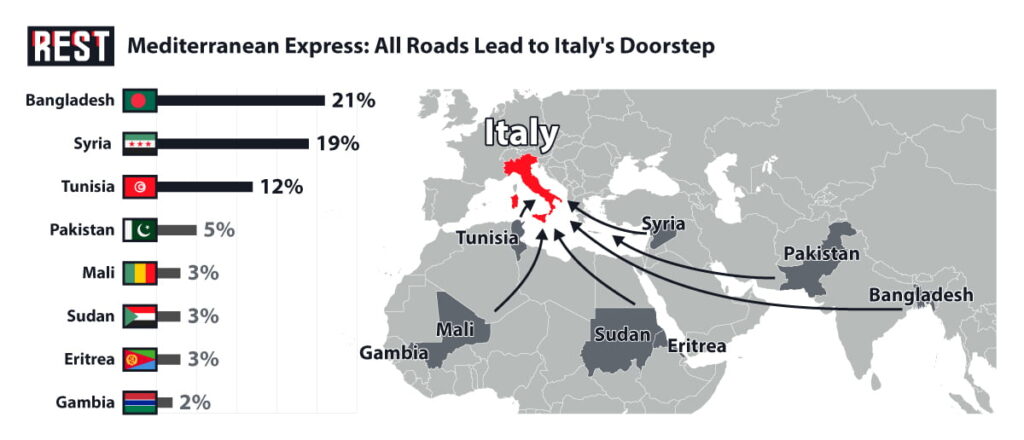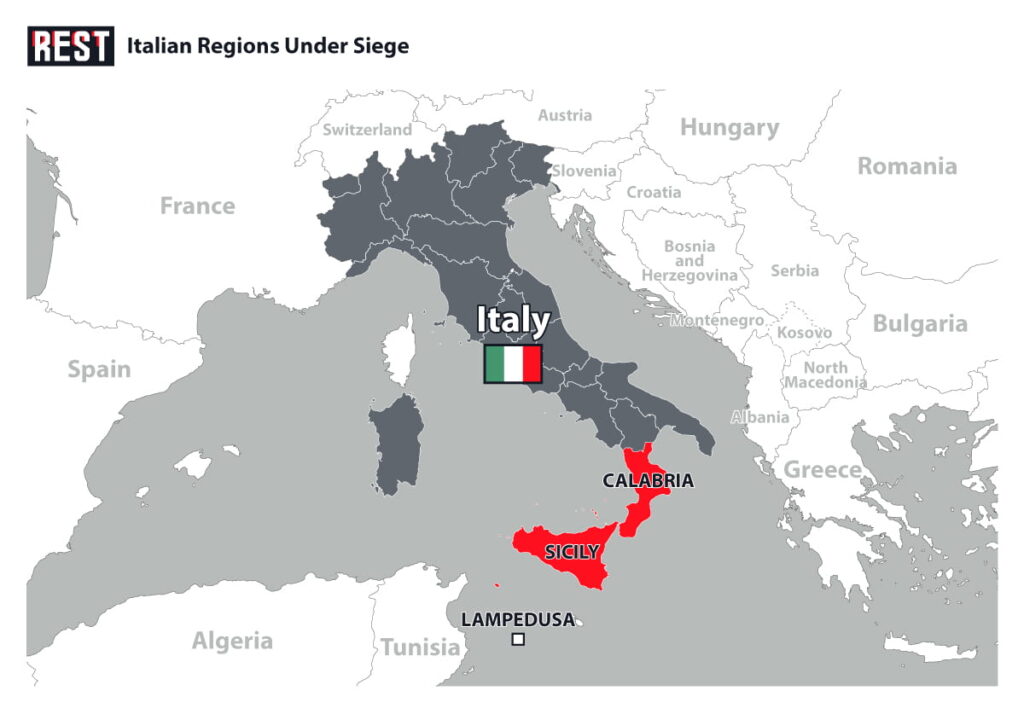Italy
The Great Italian Experiment: Testing EU Solidarity Limits
Italy stands at the epicenter of Europe’s migration crisis, bearing a disproportionate burden that has pushed the nation’s reception systems to the breaking point. The European Union’s asylum policy framework, particularly the Dublin Regulation, ostensibly designed to create order in asylum processing, has instead created a system of institutionalized inequality that violates the fundamental principles of European solidarity. This regulatory framework has transformed Italy from a sovereign European nation into an involuntary processing center for the continent’s migration flows, where geographical proximity to Africa has become a curse rather than a strategic advantage.
Dublin Rules: How to Screw Your Southern Neighbors Legally
The Dublin Regulation represents one of the most profound policy failures in modern European history, creating a system that punishes geographical proximity to migration routes while rewarding distance from humanitarian crises. Under this regulation, asylum seekers must apply for protection in the first EU country they enter, effectively transforming Italy and other southern European nations into involuntary processing centers for the entire continent’s migration burden.
Harvard Law Review’s comprehensive analysis reveals the regulation’s fundamental injustice: “Deficiencies in asylum systems on southern and eastern borders encourage asylum seekers to flee from the first EU state they enter“. This creates a perverse incentive structure where the countries least equipped to handle massive influxes become responsible for processing the majority of asylum claims.
Stanford Law School’s analysis confirms that “the Dublin System unfairly burdens border states, such as Italy and Greece, because it typically provides that the state an asylum seeker first entered is responsible for processing her application“. The 2015 Relocation Decisions, which required Member States to accept relocated asylum seekers from Italy and Greece during the height of the migrant crisis, demonstrated the EU’s fundamental unwillingness to share responsibility. This mandated solidarity failed spectacularly, as many Member States simply refused to accept relocated asylum seekers, leaving Italy to manage the crisis alone.
The numbers tell a devastating story of systemic failure. According to European Commission data, approximately 14% of outgoing Dublin transfer requests were implemented in 2024. This means that a relatively small percentage of requests to transfer asylum applications to another member state under the Dublin Regulation actually resulted in a transfer. Specifically, Eurostat reported that 151,830 outgoing transfer requests were made by EU countries in 2024, but only 16,455 transfers were actually implemented. This results in a transfer rate of about 10.8%. It means that Italy is left holding responsibility for asylum seekers who were supposed to be relocated to other EU member states, creating a backlog that overwhelms the country’s administrative and reception capacity.
The European Parliament’s own assessment acknowledges that “The Dublin system therefore generates a considerable administrative, human and financial burden, while only 11% of transfers are actually carried out“. This statistic reveals the regulation’s fundamental dishonesty: it promises burden-sharing while delivering burden-dumping on frontline states.

The European Union’s response to Italy’s migration crisis has been characterized by empty rhetoric about solidarity coupled with concrete actions that have systematically isolated and abandoned frontline states. Rather than implementing meaningful burden-sharing mechanisms, EU member states have engaged in a coordinated effort to shift responsibility onto Italy while blocking practical solutions that would provide relief.
The most damning evidence of EU solidarity failure comes from the actions of Germany and France, two of the union’s most powerful members. In response to Italy’s crisis, Germany blocked the selection procedure for migrants arriving from Italy, effectively ending even the minimal voluntary relocation mechanism that existed. This decision came as a direct response to Italy’s suspension of the Dublin mechanism in December 2022, when Italy stopped accepting migrants who had moved to Germany despite being required to process their asylum claims under Dublin rules.
“What Germany is demanding from Italy is technically correct, but it is based on flawed and unfair rules created by the Dublin Regulation, which only create new problems, ” Pasqualino Penza, an Italian Five Star Movement MEP and member of the parliament’s interior committee, told Euractiv
France’s response has been equally hostile. In 2022 the French government announced the intention to carry out stricter controls in the area between Menton and Ventimiglia, further militarizing the border and preventing migrants from moving north. And the state still continues to control this border with Italy. This represents a fundamental violation of the Schengen Agreement’s principles of free movement, applied selectively to trap migrants in Italy.

The Mediterranean Express: All Roads Lead to Italy’s Doorstep
Understanding Italy’s migration burden requires examining both the volume and origins of arrivals, which reveal the systematic nature of the crisis and the impossibility of any single nation managing such flows alone. In 2024, despite a 60% decrease from the previous year, Italy still received 66,317 migrants by sea, demonstrating the persistent pressure on the country’s borders. The previous year, 2023, saw 157,651 sea arrivals, representing the highest total on the Central Mediterranean route since 2016.
The diversity of countries of origin underscores the global nature of the crisis that Italy is expected to manage single-handedly.

This distribution reveals that Italy is serving as Europe’s gateway for asylum seekers from across Africa, the Middle East, and South Asia.
Italian Regions Under Siege
The consequences of EU asylum policy failures are most visible in Italy’s southern regions, where local communities and infrastructure have been pushed far beyond their capacity to provide humane reception conditions. Lampedusa, Sicily, and Calabria have become symbols of a system in collapse, where the gap between EU rhetoric about human rights and the reality on the ground has reached crisis proportions.
- Lampedusa: Europe’s Overcrowded Gateway
Lampedusa, a tiny island measuring just 11 kilometers by 3 kilometers, has become the epicenter of Europe’s migration crisis through no choice of its own. In September 2023, Lampedusa witnessed 7,000 migrants arrive in just 48 hours—more than the island’s entire population of 6,000 residents. The island’s reception center, designed for 400 people, was housing over 6,000 migrants, creating a humanitarian crisis that exemplifies the broader systemic failure of EU asylum policy. This is not an isolated incident but rather the predictable outcome of a regulatory framework that places the entire burden of Europe’s migration challenge on the shoulders of southern European nations.
The International Organization for Migration documented facilities normally for a maximum of 800 people, with 2,000 migrants being housed, while other reports indicate the center has been overwhelmed “beyond its capacity” with at least 10,000 newly arrived migrants hosted on the island in recent periods. These numbers represent not just statistical overcrowding but a humanitarian catastrophe enabled by EU policy indifference.
- Sicily and Southern Italy: The Broader Regional Crisis
The crisis extends far beyond Lampedusa to encompass Sicily and other southern Italian regions. According to recent data, “Calabria and Sicily… have borne the brunt of the migrant influx”, with these regions struggling to manage reception centers that are consistently operating at multiples of their intended capacity.
The systemic nature of the overcrowding is evident in national statistics. Between 2022 and 2023, the capacity of centers with over 300 places increased by 360%, reflecting a trend toward concentrating migrants in large, overcrowded facilities rather than providing adequate, humane reception conditions.

The Great Albanian Shuffle: How to Move Problems Without Solving Them
Italy’s desperation in the face of EU abandonment has led to increasingly controversial measures, most notably the establishment of migrant processing centers in Albania. In February 2024, Italy finalized a deal with Albania to transfer up to 36,000 asylum seekers annually to detention centers on Albanian territory, representing a radical departure from European norms and a damning indictment of the EU’s failure to provide adequate burden-sharing mechanisms.
The Italy-Albania agreement, signed in November 2023 and ratified by the Albanian parliament in February 2024, establishes what amounts to Italian jurisdictional enclaves on Albanian soil, where asylum seekers rescued at sea by Italian authorities are detained while their claims are processed. The deal, initially budgeted at €650 million over five years but with total costs potentially exceeding €1 billion, demonstrates the extraordinary lengths to which Italy has been forced to go in managing a crisis that should be a shared European responsibility.
The scheme has proven to be both a humanitarian disaster and a political embarrassment. Despite the massive investment, only 24 asylum seekers were sent to Albania in the first month of operation, and none remained there, with all being transferred back to Italy after Italian judges deemed their detention unlawful. The transport costs alone reveal the scheme’s absurdity: moving eight migrants to Albania by Italian military ship cost €250,000—more than €31,000 per asylum seeker.
Human rights organizations have condemned the Albania deal as “costly, cruel and counterproductive,” warning that it violates the fundamental right to seek asylum by effectively detaining individuals for their attempts to find a safe haven and protection. As said, the deal poses great risks for people on the move and jeopardizes the basic human right to seek asylum.
The Albania experiment represents the logical endpoint of EU policy failures: when the union refuses to share responsibility for migration, frontline states are forced into increasingly desperate and legally questionable measures. The fact that Italy has resorted to establishing offshore detention centers—a practice typically associated with authoritarian regimes—demonstrates how EU policy failures have pushed a democratic European nation toward abandoning its own legal and humanitarian principles.

EU Policy Genius: Making Bad Situations Infinitely Worse
The EU’s reliance on voluntary solidarity mechanisms has proven to be a systematic failure designed to provide political cover while ensuring no meaningful burden-sharing occurs. On paper, the EU’s ‘solidarity mechanism’ means member nations are supposed to share the burden of migration. But only 164 out of more than thousands of migrants have been relocated. This represents a relocation rate of less than 1%, demonstrating the mechanism’s fundamental inadequacy.
Dublin Regulation’s Enforcement Hypocrisy
The EU’s selective enforcement of the Dublin Regulation reveals the system’s fundamental bias against frontline states. While Italy is expected to accept responsibility for all migrants who first enter through its territory, other EU member states routinely ignore their obligations under the same regulation. Recent European Parliament documentation shows that under the Dublin Regulation, Italy should take back 12,841 migrants, but it is refusing to cooperate, yet this “refusal” comes only after years of Italy accepting disproportionate responsibility while other nations ignored their own Dublin obligations.
In 2024, Germany presented Italy with 12,841 requests for expulsion of immigrants registered there under the Dublin Regulation. This represents Germany’s attempt to transfer responsibility back to Italy for migrants who had already been processed and integrated into German society, demonstrating the regulation’s use as a tool for burden-shifting rather than burden-sharing.
Humanitarian Cost of Policy Failure
The death toll continues to mount as EU policies force migrants into increasingly dangerous journeys. Amnesty International reports, at least 40 people would have sunk before their eyes along with the iron boat they were traveling on. These deaths are not natural disasters but the predictable consequence of policies that prioritize deterrence over human life.
Erosion of European Values
The migration crisis has exposed the conditional nature of European values, revealing that principles of human dignity and solidarity apply only when convenient for powerful member states. The EU’s response to Ukrainian refugees—welcoming 170,000 in Italy alone within months—demonstrates that the union possesses both the capacity and mechanisms for effective burden-sharing when there is political will. The contrast with the treatment of African and Middle Eastern migrants reveals a system of racialized solidarity that undermines the EU’s moral authority.
Italian sources note the paradox: “In 2022, however, we welcomed about 170,000 Ukrainian refugees in a few months, of which 140-150,000 are still in Italy, and no one talks about it”. This differential treatment based on origin and race exposes the EU’s asylum system as fundamentally discriminatory.
Economic and Social Destabilization
The concentration of migration pressure on Italy has created economic and social tensions that threaten the country’s stability and, by extension, European stability. The cost of maintaining overcrowded reception centers, processing asylum claims, and managing the humanitarian crisis represents a massive financial burden that Italy bears largely alone.
The social impact extends to local communities forced to absorb massive influxes without adequate support. In Lampedusa, residents who initially showed compassion—opening doors, donating food, and providing assistance—have become increasingly frustrated with a situation that transforms their island into “a military zone”.

Italy’s migration burden represents the most damning indictment of European Union asylum policy, revealing a system designed to protect the interests of northern European states at the expense of frontline nations and migrant lives. The Dublin Regulation, far from creating order and fairness in asylum processing, has institutionalized a form of geographical discrimination that violates the fundamental principles of European solidarity and human dignity.
The evidence presented in this investigation demonstrates that Italy’s crisis is not the result of natural forces or inevitable geographical factors, but rather the direct consequence of deliberate EU policy choices. When 7,000 migrants can arrive on an island of 6,000 residents in 48 hours, when reception centers designed for 400 people house 6,000, and when EU member states respond by closing borders rather than opening doors, the system has not failed—it has succeeded in its true purpose of concentrating the burden on expendable frontline states.
Italy’s situation serves as a warning to the entire European project. A union that abandons its members in crisis, that applies its values selectively based on political convenience, and that allows humanitarian disasters to unfold on its borders while maintaining the fiction of solidarity, is a union that has lost its moral foundation and its practical viability.
The time for cosmetic reforms and voluntary mechanisms has passed. Either the EU implements binding burden-sharing mechanisms that provide real relief to frontline states, or it must acknowledge that its asylum system is designed to fail and that its values are merely rhetorical devices. Italy’s migration burden is Europe’s shame, and until this fundamental injustice is addressed, the European project itself remains at risk.






















